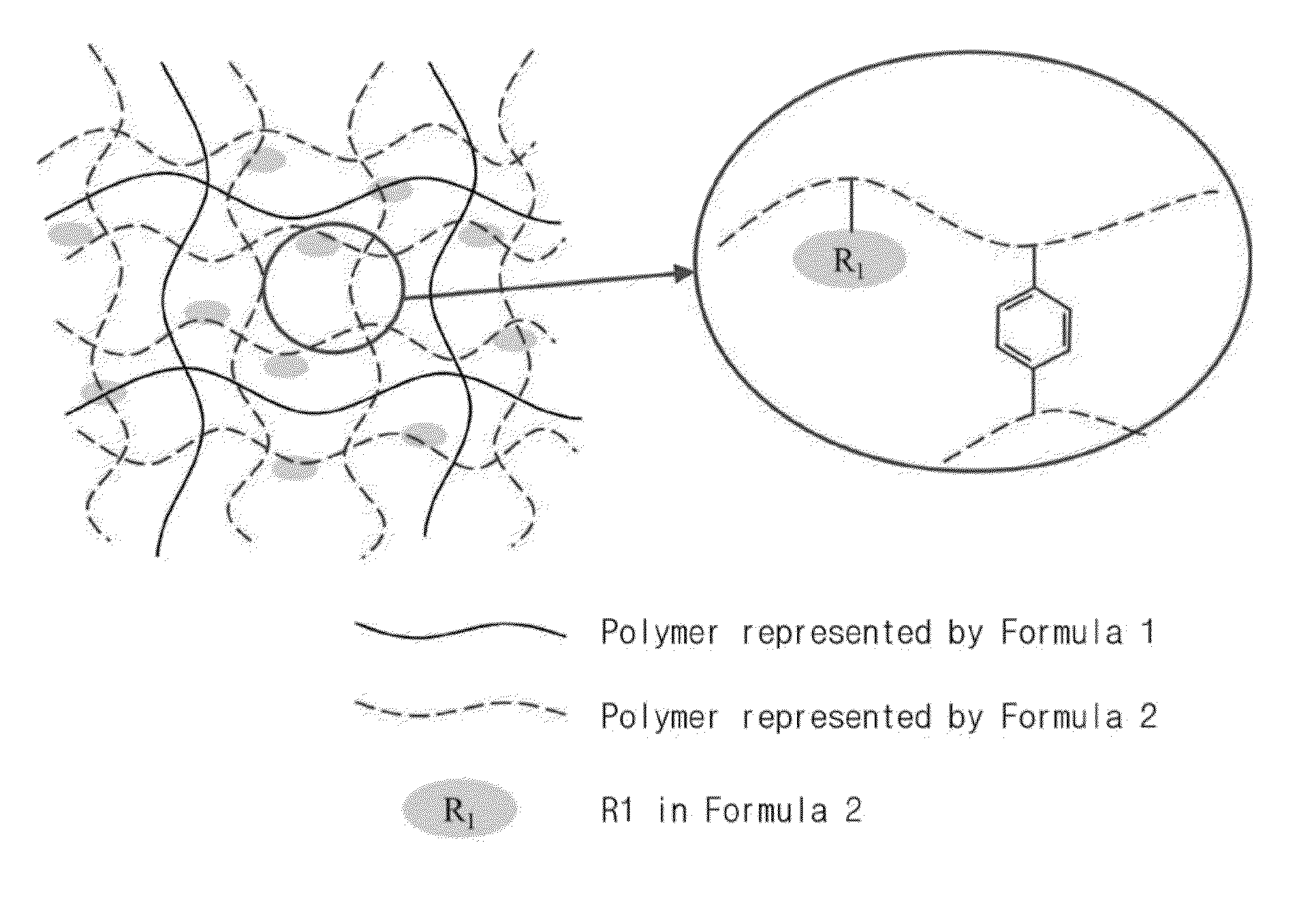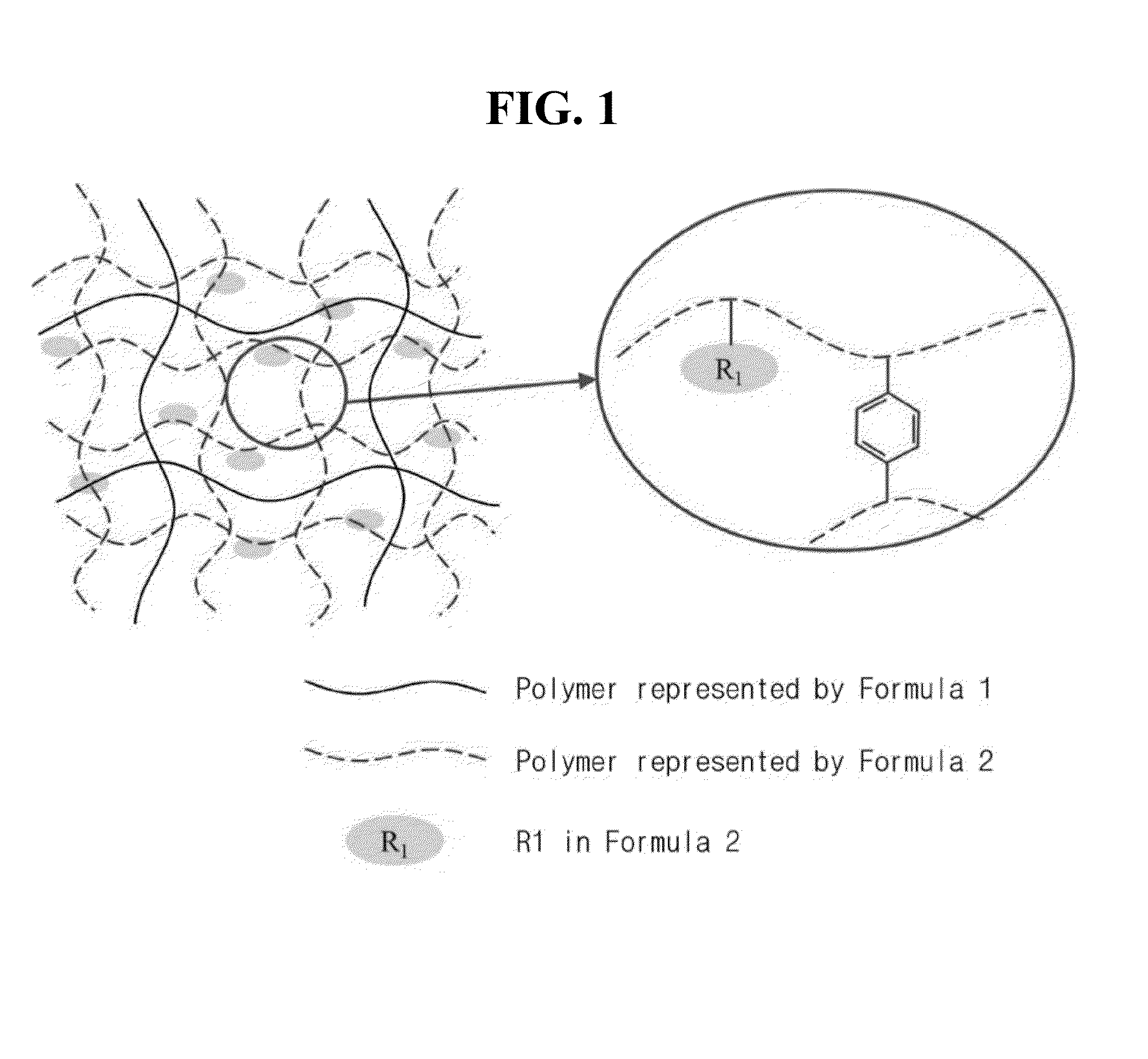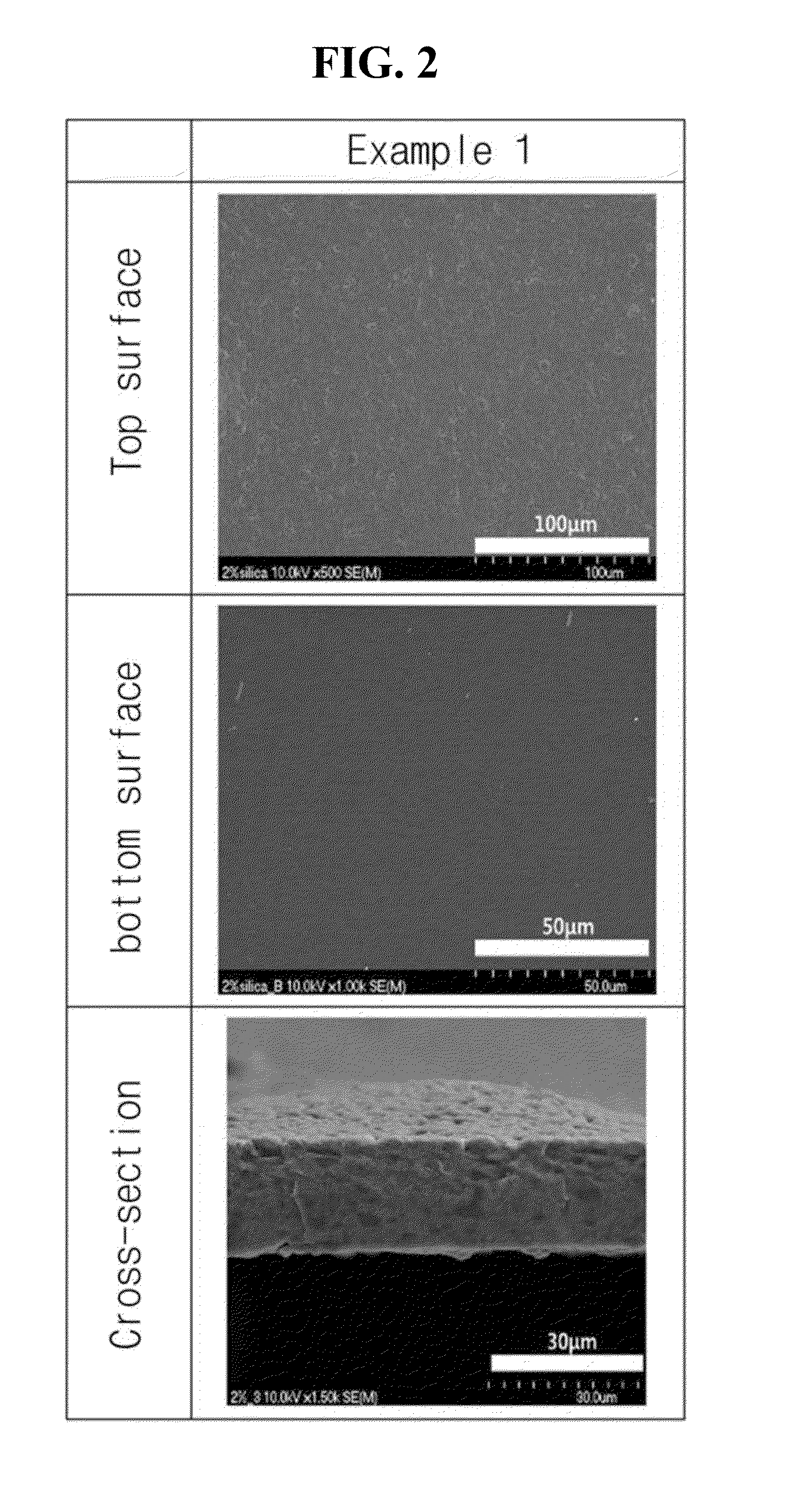Organic-inorganic composite anion exchange membrane containing polyvinylidene fluoride polymer for non-aqueous redox flow battery and method for preparing the same
polyvinylidene fluoride technology, applied in the direction of non-aqueous electrolyte cells, indirect fuel cells, cell components, etc., can solve the problem that the polyvinylidene fluoride polymer is applied to a non-aqueous redox flow, and no case has been reported. , to achieve the effect of improving the physical strength and thermal stability of organic polymers, less shrinkage and swelling,
- Summary
- Abstract
- Description
- Claims
- Application Information
AI Technical Summary
Benefits of technology
Problems solved by technology
Method used
Image
Examples
example 1
Organic-Inorganic Composite Anion Exchange Membrane-1
[0080]0.050 g of silica (SiO2) nanopowder (Aldrich S5130, 7 nm) (2 wt % based on the weight of PVDF) and 25 mL of N,N-dimethyl acetamide were mixed, followed by adding 2.5 g of polyvinylidene fluoride (Aldrich 347078, Mw: 530,000) to the mixture to prepare a homogeneous polymer solution.
[0081]To the polymer solution, 6.72 mL of glycidyl methacrylate as a monomer, 1.2 mL of divinylbenzene as a crosslinking agent and 0.05 g of benzoyl peroxide as an initiator were added, followed by mechanical stirring at 70° C. or more for 40 minutes to prepare a polymer solution.
[0082]Subsequently, the polymer solution was cast on a glass plate while adjusting the thickness (30 μm-40 μm) using a doctor blade. The glass plate having the polymer solution cast thereon was flattened and subjected to thermal polymerization in an oven at 90° C. for 12 hours, and the polymer membrane on the glass plate was sufficiently impregnated in distilled water, fol...
example 2
Organic-Inorganic Composite Anion Exchange Membrane-2
[0084]An organic-inorganic composite anion exchange membrane was prepared in the same manner as in Example 1 except that 0.125 g of silica nanopowder (5 wt % based on the amount of polyvinylidene fluoride) was further added in preparation of the polymer solution.
example 3
Organic-Inorganic Composite Anion Exchange Membrane-3
[0085]An organic-inorganic composite anion exchange membrane was prepared in the same manner as in Example 1 except that 0.250 g of silica nanopowder (10 wt % based on the amount of polyvinylidene fluoride) was further added in preparation of the polymer solution.
PUM
| Property | Measurement | Unit |
|---|---|---|
| particle size | aaaaa | aaaaa |
| thickness | aaaaa | aaaaa |
| ionic conductivity | aaaaa | aaaaa |
Abstract
Description
Claims
Application Information
 Login to View More
Login to View More - R&D
- Intellectual Property
- Life Sciences
- Materials
- Tech Scout
- Unparalleled Data Quality
- Higher Quality Content
- 60% Fewer Hallucinations
Browse by: Latest US Patents, China's latest patents, Technical Efficacy Thesaurus, Application Domain, Technology Topic, Popular Technical Reports.
© 2025 PatSnap. All rights reserved.Legal|Privacy policy|Modern Slavery Act Transparency Statement|Sitemap|About US| Contact US: help@patsnap.com



